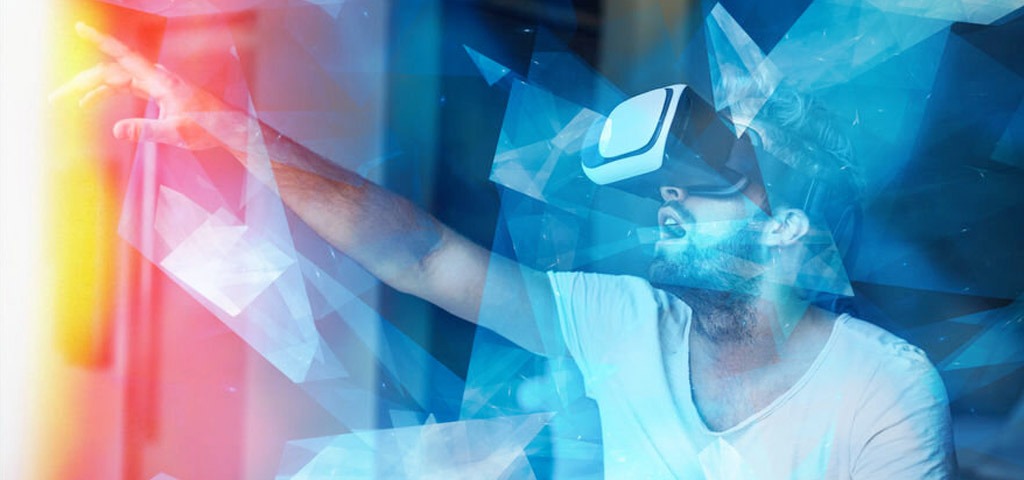The Psychological Impact of Virtual Reality Porn Versus 2D Porn
June 14, 2021 by Justin Lehmiller
Virtual reality (VR) pornography is a small but growing market in the adult industry. As the cost of this technology comes down in price and becomes more accessible to a wider consumer base, its growth is only likely to accelerate. However, as VR porn becomes more widespread, we’re also likely to hear more and more questions raised about how it impacts people, and whether its impact is similar to or different from two-dimensional (2D) porn.
Currently, only a small handful of studies have explored the impact of VR porn, so there’s a lot we don’t yet know. However, a recent study published in the Journal of Sex Research suggests that the psychological impact of VR porn is quite distinct from 2D porn.
For this study, researchers recruited a group of 50 heterosexual men aged 18-60. All participants watched two videos, each on a separate day. One was a VR video, while the other was in 2D. Both videos were the same length and depicted the same sex act: a threesome involving one man and two women from the male first-person perspective.
Participants completed a survey during and after the film about their feelings of sexual arousal and desire. Saliva samples were also collected before and after the films to test for levels of oxytocin, a hormone that plays a role in feelings of bondedness to others.
It turned out that the VR porn was perceived very differently from the 2D porn. Specifically:
-
Levels of sexual and bodily arousal were higher when watching VR porn.
-
Feelings of sexual desire for the actresses were higher in the VR condition.
-
Participants felt more connected to the performers and had more desire to interact with them in the VR condition. They also felt more desired, flirted with, and that the performers were looking them in the eye when watching VR porn.
-
VR porn was seen as less boring and participants felt more like they were the male actor.
Both types of porn were linked to greater oxytocin release, but levels did not significantly differ based on type of video. The researchers had expected to find that VR porn would be linked to more oxytocin release, but that wasn’t the case. This was particularly interesting to me because I’ve long wondered about oxytocin release during porn viewing—and whether it might play a role in why some people feel very bonded to specific performers. Do people who develop attachments to specific porn performers tend to release more oxytocin? This would be an interesting question to explore in future research.
Lastly, greater oxytocin levels at baseline (prior to watching porn) were linked to perceiving more intensity of eye contact in the VR condition, which suggests that there is some role of oxytocin in how people perceive and experience VR porn.
This study offers a preliminary look at the psychological impact of VR porn and has several limitations, including the fact that only heterosexual men were studied and participants did not get to select their own porn (and therefore could not customize it for their tastes). Further research is needed to better understand how different groups of people experience this kind of porn.
That said, these results suggest that VR porn is indeed perceived quite differently from 2D porn in terms of creating a greater illusion of intimacy. Whether that is considered positive or negative will be hotly debated.
Some will argue that feeling intimacy from porn is yet another way that technology will ultimately push us apart. Likewise, some may see porn that produces more feelings of intimacy as a bigger relationship threat, meaning they might be more likely to categorize it as cheating/infidelity. However, others will point to beneficial or potentially therapeutic applications—for example, could this type of porn help people learn to deal with sexual performance anxiety by creating intimacy without fear of rejection?
What do you think? Weigh in with your comments below!
Want to learn more about Sex and Psychology? Click here for more from the blog or here to listen to the podcast. Follow Sex and Psychology on Facebook, Twitter (@JustinLehmiller), or Reddit to receive updates. You can also follow Dr. Lehmiller on YouTube and Instagram.
To learn more about this research, see: Dekker, A., Wenzlaff, F., Biedermann, S. V., Briken, P., & Fuss, J. (2020). VR Porn as “Empathy Machine”? Perception of Self and Others in Virtual Reality Pornography. The Journal of Sex Research.

Dr. Justin Lehmiller
Founder & Owner of Sex and PsychologyDr. Justin Lehmiller is a social psychologist and Research Fellow at The Kinsey Institute. He runs the Sex and Psychology blog and podcast and is author of the popular book Tell Me What You Want. Dr. Lehmiller is an award-winning educator, and a prolific researcher who has published more than 50 academic works.
Read full bio >


